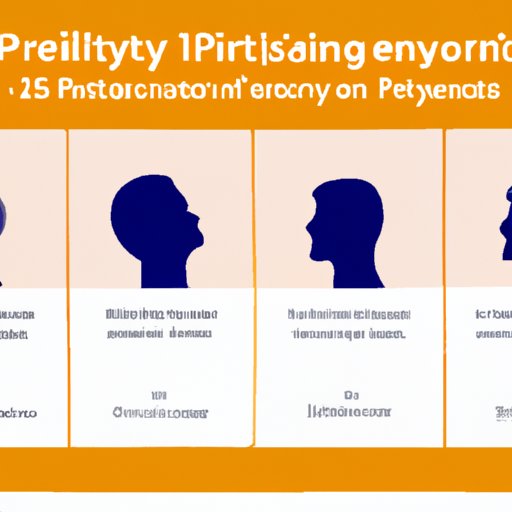
Unveiling the Origins: A Deep Dive into the Development of the Big Five Personality Test
Have you ever wondered when the Big Five Personality Test was developed? Maybe you’ve taken the test recently or heard about it from a friend, but you’re curious about its origins. In this article, we will explore the fascinating story behind the creation of the Big Five Personality Test. From its early beginnings to its current widespread use, we’ll delve into the historical context, key researchers, and the process of its development. Let’s dive in!
Defining the Big Five Personality Test and its Significance
The Big Five Personality Test is a widely used assessment tool that aims to analyze an individual’s personality traits. It measures five core dimensions of personality, namely openness, conscientiousness, extraversion, agreeableness, and neuroticism. Each dimension represents a spectrum, and a person’s score indicates where they fall on each trait. This test is highly regarded in the field of psychology and has significant implications for understanding human behavior, relationships, and work-related outcomes.
Exploring the Early Origins of Personality Psychology and the Need for a Standardized Personality Assessment
Before the development of the Big Five Personality Test, researchers sought to understand human personality through various theories, such as Sigmund Freud’s psychoanalysis and Carl Jung’s theory of personality types. However, these theories lacked a standardized assessment tool that could reliably measure personality traits.
The need for a comprehensive and reliable measure of personality became apparent in the mid-20th century. Psychologists recognized that personality played a crucial role in various aspects of life, including education, career development, and mental health. Thus, the drive to develop a standardized personality assessment began.
Discussing the Key Researchers and their Contributions in the Development of the Big Five Personality Test
The Big Five Personality Test was not the work of a single individual but rather the culmination of decades of research and contributions from multiple psychologists. The key figures in the development of the test include Raymond B. Cattell, Hans Eysenck, and Lewis Goldberg.
Raymond B. Cattell, an influential psychologist, introduced the concept of personality traits and developed the 16PF Questionnaire. His work laid the foundation for understanding the dimensions of personality and was an important precursor to the Big Five model.
Hans Eysenck, a British psychologist, further expanded on Cattell’s work by proposing three fundamental dimensions of personality: extraversion, neuroticism, and psychoticism. Although Eysenck’s model differed from the Big Five, it provided valuable insights into trait-based personality assessments.
Lewis Goldberg played a crucial role in refining and popularizing the Big Five Personality Test. He used factor analysis to identify the five key dimensions of personality and demonstrated their reliability and stability across different cultures. Goldberg’s efforts were instrumental in establishing the Big Five model as the gold standard for personality assessment.
Tracing the Evolution of the Big Five Personality Test
Initially, the Big Five Personality Test found its place as an educational tool in academic settings. Researchers and educators recognized its potential for understanding student behavior and learning styles. As the test gained recognition for its efficacy, it expanded beyond the classroom and found applications in various fields, including hiring and selection processes, clinical psychology, and relationship counseling.
Over time, modifications and improvements were made to the test to enhance its validity and reliability. Additional scales were developed to capture more nuanced aspects of personality, and cross-cultural studies were conducted to ensure its applicability across different populations and cultures.
Unraveling the Past: The Fascinating Story Behind the Big Five Personality Test
The emergence of the Big Five Personality Test can be traced back to the historical context of personality psychology. While various theories and approaches were proposed, it was the advent of factor analysis and advancements in statistical techniques that provided the necessary tools for developing a comprehensive personality assessment.
Researchers recognized the importance of capturing the diversity of human personality and aims to represent it through a limited number of dimensions. The Big Five model emerged as a result of extensive empirical research and statistical analysis, combining the efforts of multiple psychologists.
During its inception, the development of the Big Five Personality Test faced some controversies and challenges. Skeptics raised concerns about oversimplification and the limitations of trait-based assessments. However, the test’s widespread acceptance and extensive validation studies have shown its practical utility and solid empirical foundation.
The Birth of an Analytical Tool: Exploring the Creation of the Big Five Personality Test
The process of creating the Big Five Personality Test involved extensive research methodologies and data analysis. Researchers utilized factor analysis, a statistical technique, to identify the underlying dimensions of personality. By analyzing large quantities of data from self-report questionnaires, researchers were able to establish the reliability of the test and validate its ability to measure personality traits effectively.
Empirical studies played a vital role in establishing the validity and reliability of the Big Five Personality Test. Researchers collected data from diverse populations and cultures to ensure the universality of the five dimensions. The test underwent rigorous psychometric testing, including split-half reliability analysis, test-retest reliability, and criterion validity studies, to establish its accuracy and predictive power.
Through this detailed process, the Big Five Personality Test was refined and validated to provide meaningful insights into an individual’s personality traits and tendencies.
Unlocking Human Behavior: The Journey of the Big Five Personality Test
The Big Five Personality Test offers valuable insights into human behavior and individual differences. By understanding an individual’s personality traits, we can gain a deeper understanding of their preferences, motivations, and behavior patterns.
Practically, the Big Five Personality Test finds applications in diverse contexts. In the workplace, it helps with hiring decisions, team building, and career development. In clinical psychology, it aids in personality disorders diagnosis and treatment planning. In relationships, it sheds light on compatibility and relationship dynamics.
However, it’s important to note that the Big Five Personality Test is not a comprehensive measure of personality. It doesn’t capture aspects such as values, beliefs, and unique life experiences. It should be used as a tool for self-reflection and guidance rather than a definitive assessment of an individual’s entire being.
Conclusion
The development of the Big Five Personality Test is a testament to the continuous efforts of psychologists to understand and measure human personality. From its early beginnings to its widespread acceptance, the test has undergone a remarkable journey. Understanding its origins and development offers valuable insights into the complexities of personality and its impact on our lives.
By exploring the historical context, key researchers, and creation process of the Big Five Personality Test, we can appreciate its significance and usefulness. It enhances our understanding of ourselves and provides a framework for better self-awareness, personal growth, and relationship dynamics.
So, next time you take the Big Five Personality Test or hear about it, remember its rich history and the tremendous effort that went into its development. Embrace the knowledge it offers and unlock a deeper understanding of yourself and others.
(Note: Is this article not meeting your expectations? Do you have knowledge or insights to share? Unlock new opportunities and expand your reach by joining our authors team. Click Registration to join us and share your expertise with our readers.)
